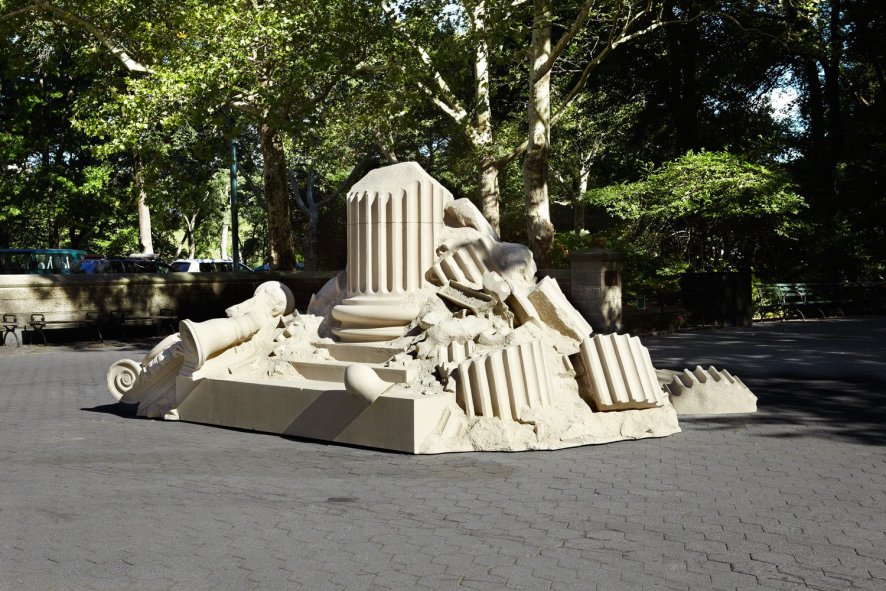The Happy Prince, 2010
metal frame, glass-fiber reinforced concrete, epoxy cement
400 x 240 x 335 cm
UNIQUE
Provenance
Public Art Fund
Exhibitions
2011, Artzuid 2011, Amsterdam. NL
Doris C. Freedman Plaza
Central Park, New York City
September 15, 2010 – April 10, 2011
“High above the city, on a tall column, stood the statue of the Happy Prince. He was
gilded all over with thin leaves of fine gold, for eyes he had two bright sapphires, and a large red ruby glowed on his sword-hilt.” So begins the best-known children’s story by the renowned literary figure, Oscar Wilde (1854-1900). It seems fitting that British artist Ryan Gander (b. 1976) has taken inspiration for his first public commission from the tale of an enchanted monument. Gander’s work often explores the currents that flow between language, imagination, and art. Here he has re-imagined the final, climactic moments of Wilde’s story where the statue is destroyed. Aided by a friendly swallow, the prince has given away all of his jewels and gilding to alleviate the suffering of the city’s poor. No longer impressive to city officials, Wilde’s denuded metal statue is melted down.
In Gander’s version, the statue appears to be stone; the fallen swallow and the prince’s indestructible heart lie amidst the rubble. On closer inspection we see that the “ruin” is a single massive object: a sculpture of a ruin. In this way, it functions like a plastic toy ruin, at once descriptive and frankly artificial. Gander’s wry evocation of Wilde’s tale still resonates in our own period of economic inequality. At the same time, it presents a contemporary approach to sculpture, where the role of the public monument remains an open question.

